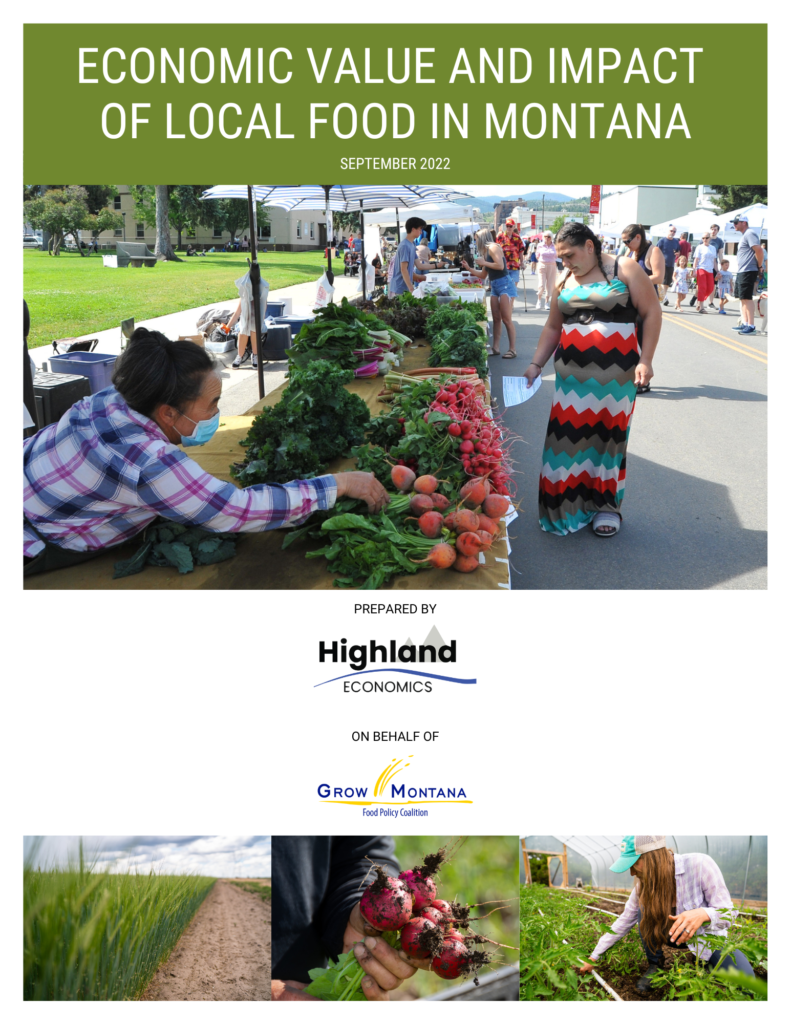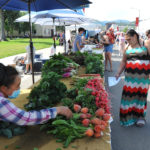Grow Montana Releases New Study: “Economic Value and Impact of Local Food in Montana”
Grow Montana Food Policy Coalition has released a new report, providing up to date information about the economic impact of local foods in Montana. The report, “Economic Value and Impact of Local Food in Montana”, was completed by Highland Economics on behalf of the coalition and aimed to answer questions regarding consumption of Montana foods and retail purchases by Montanans. The report evaluates the economic value of “local food”, food produced and consumed in the state of Montana without leaving the state for additional finishing and processing elsewhere. Download the full report HERE.
Highland Economics began research in January of 2021, and interviewed local food consumers, producers, and intermediaries (processors and institutional buyers such as schools and hospitals) to understand the current climate of local food purchasing in the state. An extensive literature review on local foods in Montana and nation-wide was also conducted.
Key Take Aways Include:
- $158 million is the estimated total of retail value of local food sales in Montana: $118 million comes from sales at stores, restaurants institutions, and processors. Direct-to-consumer sales, such as farmers markets, farms-stands, and community supported agriculture (CSAs) subscriptions account for $40 million in local food sales.
- Montana farm sales contribute $77 million to the local food market.
- Local food production in Montana supports 1,110 Montanan held jobs and supports $31.9 million in MT labor income.
- Less food processing capacity (and associated employment) in Montana: Montana employed 3,000 people in the food processing sector in the 1950’s and while the population has doubled there are only 2,647 people employed in this sector today (2021).
- More reliance on processing outside the state and distribution infrastructure: This is particularly evident in meat processing. Montana is known for animal production, cattle in particular. Even though the state has the third highest ratio of cattle to people across the US most of the meat consumed in the state is imported (or re-imported) after it is finished and processed elsewhere.
- A smaller portion of the retail spending on food going back to the farm and ranch: The farm and ranch share of the food dollar spent by consumers in 1910 was 60 percent, and today it is estimated at 16 percent.



